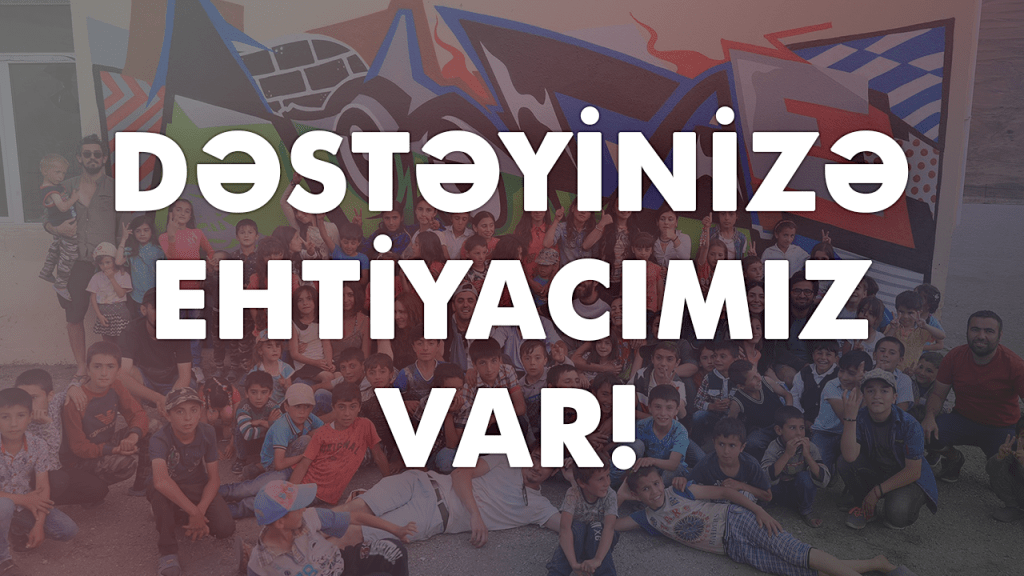No longing for the Soviet times

The Soviet experience of Azerbaijan left its traces in every aspect of cultural, social, and political life. One of the main transmission mechanisms of this influence was economical. Thus, it is valuable to understand how the Soviet period shaped Azerbaijan’s economy. In this article, I will analyze several important aspects of the economy of Azerbaijan SSR from the perspective of colonialism.
Because Azerbaijan was subordinate to the Tsarist Empire until 1918 and continued not to have political independence within the USSR (Nove and Newth, 1967), it is insightful to look at our economy in the Soviet era from a colonial framework. However, belonging to the socialist system of the USSR makes the nature of economic relations different from capitalist empires. For this reason, it is important to discuss whether subjugation to the USSR fits the definition of colonialism.
Colonialism refers to the territorial, linguistic, legal, epistemic, cultural, and economic dominance of one group over another (International Encyclopedia of Human Geography, 2009). Considering that almost all important political, social, and economic decisions during the USSR were made in Moscow (Nove and Newth, 1967) and the participation of Azerbaijanis in decision-making was limited (Shahrani, 1993), it is reasonable to assert that Azerbaijan was a colony of the Russian-dominated Soviets. But what are the economic consequences of colonization?
Colonialism in economics literature
The economics literature suggests that colonial policies undermine economic development by building “extractive” political and economic institutions (Acemoglu et al., 2001; Dell, 2010; Acemoglu and Robinson, 2012). Extractive economic institutions hinder economic growth because they suppress property rights and create entry barriers to the market (Acemoglu et al., 2001). On the other hand, some economists argue that colonial policies generate positive socio-economic impacts through infrastructural development (Dell and Olken, 2019; Huillery, 2009; Cage and Rueda, 2013). Colonialists can take steps that can positively affect economic growth, such as infrastructure investment and know-how sharing(Dell and Olken, 2019). But can these theories be applied to Soviet colonialism?
It would be misleading to automatically apply the above-mentioned conclusions to the Soviet example and ignore that the Soviet system did not have profit-based incentives. Studies on the socio-economic effects of colonialism usually consider the “traditional” colonies of European countries. In the traditional colonies, profit-maximizing European companies carried out the exploitation and subjugation of natives. However, in the Soviet regime, because the capital accumulation incentives were almost none, the looting of natural resources and the exploitation of workers in conditions close to slavery were not at the root of the economic policy. Although the Soviet institutes were repressive, the distribution of wages among the Soviet republics, the import and export accounts, and the development of the infrastructure point that the institutes established in Azerbaijan differed from the ones built in British, French, and Dutch colonies. Thus, the second approach in the colonialism literature – the positive impact of colonialism on economic development due to infrastructure development and knowledge sharing – could be a suitable framework to describe the Soviet experience.
The Soviet era was different…
Some scholars argue that education and health infrastructures built by the colonial empires have positive social and economic effects on those regions. For example, in the context of the Dutch Colonial System, the Netherlands constructed an integrated industrial and agricultural system to bolster sugar production in 19th-century Java (Dell and Olken, 2019). Today, the areas close to the sugar processing factories have higher economic development, partly due to the established rails and roads under the Dutch colonial system (Dell and Olken, 2019). Similarly, Caicedo (2018) shows that Jesuit religious and educational missions in Latin American colonies led to high educational outcomes and income levels in those regions even 250 years later.
In the 20th century, Russia’s educational, health, and industrial investment in the socialist republics refers to the positive socio-economic impact of Soviet colonialism (Nove and Newth, 1967; Newton, 1976). According to the Soviet statistics, Azerbaijan’s industrial output increased 4.5 times in 1940 compared to 1928, and 2.5 times compared to 1940 in 1958. The Soviet socio-economic policies significantly decreased early marriage rates and increased women’s education and labour force participation in Azerbaijan (Evans, 2021), where conservative-patriarchal values were dominant historically.
Do these development trends allow us to claim that Soviet colonialism in Azerbaijan was a positive experience from cultural, social, and economic aspects? To answer the question satisfactorily, it is necessary to have a counterfactual case. Thus, we need to know the potential development path of Azerbaijan without the Soviet Union. Doing so requires research of high scientific rigour and the use of detailed data. Therefore, the subsequent ideas do not establish a cause-and-effect relationship but bring a new perspective to the discussion.
The socio-cultural “prosperity” brought by the Soviet government should not be separately analyzed from political pressure and repression. Because when the incentive structure behind the reforms is built on fear, the efficacy of the new policies may not be sustainable. The Soviet government, with Marxist-Leninist ideology, used repressive methods in its reforms. For the success of the socialist economic policies, the Soviet government weakened the feudal clans and tribal structures by killing the local landowners, violently oppressed religious communities, and exiled or killed poets, writers, and musicians. The repressiveness of these Soviet policies is perhaps the reason why Azerbaijan never obtained the level of development promised by the Soviet Union.
Azerbaijan as a Soviet Colony
In the 1980s, Azerbaijan and Central Asian republics lagged behind the rest of the USSR in terms of welfare indicators. The number of scientific workers per 1000 people in Azerbaijan was 65% of the USSR average and 45% of the Russian average (IMF, 1991)[1]. In 1989, the number of hospital beds and doctors per 1,000 people was 70% of the number in Russia (IMF, 1991). The housing area per capita was 10% lower than the USSR average (IMF, 1991). Looking at the participation of women in the labour market, we can see that the success of social policies that served to destroy the patriarchy was limited. In 1989, Azerbaijan had one of the lowest labour force participation of women (IMF, 1991). Likewise, only the number of female specialists significantly lagged behind the male ones. Although there was an increase in the participation of women in higher education in the early decades of the USSR, this growth experienced a premature slowdown, and the number of women graduating from universities continued to be lesser than men.
[1] The IMF data is based on official Soviet statistics, which are often significantly inflated.

Specialists per 10,000 people (Soviet average in the white bar), 1987
The gap between Azerbaijan and the union republics was also economic. At first glance, the high degree of capital flow to Azerbaijan and the rapid industrialization seems to be a benevolent contribution of the Soviet economic policy. But a meticulous look would reveal serious economic inequality between Azerbaijan and other countries of the USSR. In 1970, per capita income was 35 percent lower than the Soviet average. By the end of the USSR, Azerbaijan had the lowest salary level amongst other union republics. Because the industrialization policy in Azerbaijan during the USSR was narrowly branched, the production volume of industrial products in the republic seriously lagged behind that of many union republics. Between 1968 and 1988, the rate of capital investment in Azerbaijan was twice lower than the Soviet average. Although the volume of industrial products produced in Azerbaijan increased by more than 1000 percent between 1928 and 1958, the number of workers working in this field increased only slightly. Unlike other republics of the USSR[2], the labor force of Azerbaijan was largely in the agricultural sector.
[2] Except for the Central Asian republics

Oil production growth rate

Average monthly salary (wrt Soviet average)
The focus of Soviet industrialization in Azerbaijan was solely limited to the mining sector. Once the Soviets started extracting oil and gas from the Siberian fields in the 1970s, capital investments and the oil output in Azerbaijan began to decrease sharply. Consequently, Azerbaijan stood in the last rows of the union in terms of industrial production towards the end of the USSR. The narrow focus of industrialization resulted in low urbanization, stagnation of human capital growth around the rural areas, low social mobility, and socio-economic inequality with other republics. While other republics benefited from industrial growth, Azerbaijan stayed an agrarian republic with a weak connection to the value chains.
References
- A Study of the Soviet Economy. 3-Volume Set. 1991. International Monetary Fund EBooks. https://doi.org/10.5089/9789264134683.071
- Acemoglu, Daron, Simon Johnson, və James A. Robinson. 2001. “The Colonial Origins of Comparative Development: An Empirical Investigation.” The American Economic Review 91 (5): 1369–1401. https://doi.org/10.1257/aer.91.5.1369.
- Caicedo, Felipe Valencia. 2018. “The Mission: Human Capital Transmission, Economic Persistence, and Culture in South America*.” Quarterly Journal of Economics 134 (1): 507–56. https://doi.org/10.1093/qje/qjy024
- Cagé, Julia, və Valeria Rueda. 2013. “The Long Term Effects of the Printing Press in Sub-Saharan Africa.” Social Science Research Network, January. https://doi.org/10.2139/ssrn.2294338
- Dell, Melissa. 2010. “The Persistent Effects of Peru’s MiningMita.” Econometrica 78 (6): 1863–1903. https://doi.org/10.3982/ecta8121
- Dell, Melissa, and Benjamin A. Olken. 2019. “The Development Effects of the Extractive Colonial Economy: The Dutch Cultivation System in Java.” The Review of Economic Studies 87 (1): 164–203. https://doi.org/10.1093/restud/rdz017.
- Evans, Alice. “Did Communism Smash the Patriarchy?” October 1, 2021. Bloq. https://www.draliceevans.com/post/did-communism-smash-the-patriarchy
- Huillery, Elise. 2009. “History Matters: The Long-Term Impact of Colonial Public Investments in French West Africa.” American Economic Journal: Applied Economics 1 (2): 176–215. https://doi.org/10.1257/app.1.2.176.
- Newton, Francis. 1976. “Soviet Central Asia: Economic Progress and Problems.” Middle Eastern Studies 12 (3): 87–104. https://doi.org/10.1080/00263207608700324
- Nove, A., və J. A. Newth. 1967. The Soviet Middle East: A Model for Development? https://ci.nii.ac.jp/ncid/BA20407015
- ———. 2010b. “International Encyclopedia of Human Geography (2009).” Choice Reviews Online 48 (01): 48–0052. https://doi.org/10.5860/choice.48-0052
- Shahrani, Nazif. 1993. “Central Asia and the Challenge of the Soviet Legacy.” Central Asian Survey 12 (2): 123–35. https://doi.org/10.1080/02634939308400809
- “Why Nations Fail: The Origins of Power, Prosperity, and Poverty.” 2012. Choice Reviews Online 50 (01): 50–0390. https://doi.org/10.5860/choice.50-0390

Economics Ph.D. student at the University of California, Irvine





